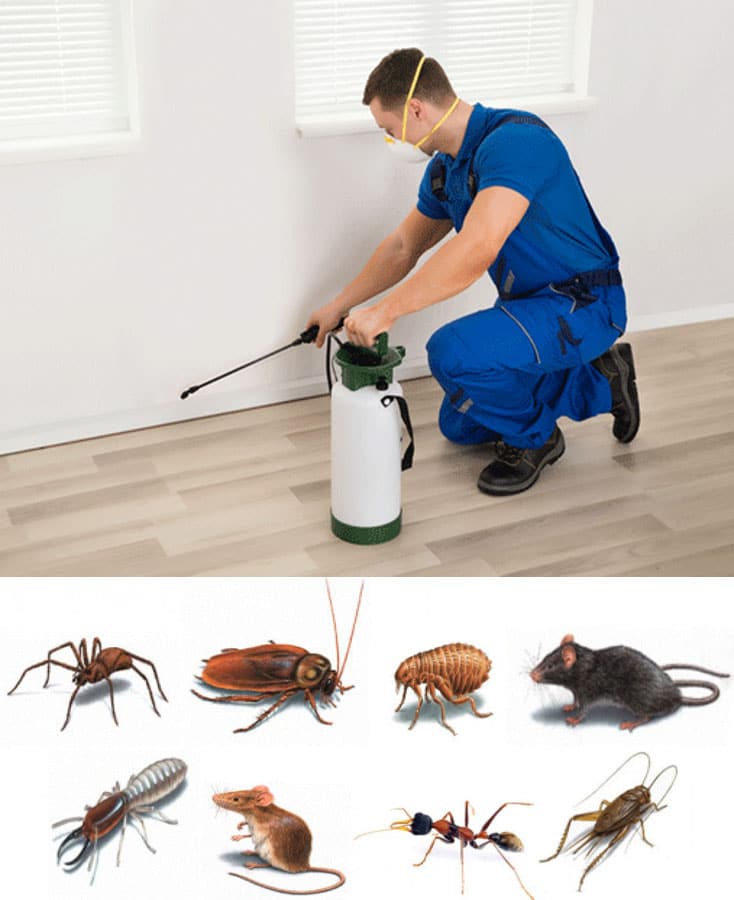A1 Charlotte Pest Control Companies - Your Neighborhood Pest Specialists
A1 Charlotte Pest Control Companies - Your Neighborhood Pest Specialists
Blog Article
Bed Bug Treatment Break Down: Contrasting Chemical Vs. Non-Chemical Solutions
In the realm of bug control, especially when handling the persistent problem of bed insects, the choice in between chemical and non-chemical treatment remedies can be a crucial one. Both strategies use distinct advantages and downsides, influencing factors such as efficiency, security factors to consider, and general cost. By taking a look at the nuanced information of each method, a more clear understanding of which path to go after in attending to a bed pest problem can be achieved.
Efficiency of Chemical Therapies
Chemical therapies for bed bug problems have been widely recognized for their fast and powerful effectiveness in getting rid of these pests. When considering the efficiency of chemical therapies, it is vital to recognize that they can offer a fast and thorough service to a bed pest trouble. Specialist pest control operators often rely upon pesticides to target bed pests at various phases of their life process, consisting of eggs, fairies, and adults. These chemicals usually work by disrupting the bed insects' nerves, causing paralysis and eventual death.
Additionally, chemical therapies have the advantage of supplying residual results, meaning that they can proceed to eliminate bed pests even after the first application. This recurring action is specifically useful in combating any prospective re-infestations. Furthermore, the quick action of chemical therapies can bring relief to people dealing with extreme bed bug problems, permitting them to gain back control of their living spaces swiftly.
Safety And Security Interest In Chemical Solutions
When using chemical options for bed pest therapy is ensuring the safety of passengers and the environment,One essential aspect that requires careful factor to consider. While chemical treatments can be effective in eliminating bed bugs, they may posture risks if not dealt with appropriately. One of the primary safety interest in chemical solutions is the potential damage they can cause to human wellness. Direct exposure to certain chemicals utilized in bed insect treatments can lead to respiratory system concerns, skin irritability, or other negative reactions, particularly in individuals with pre-existing problems or level of sensitivities. Furthermore, incorrect application or dose of chemical pesticides can cause hazardous residues sticking around in the treated location, posturing long-lasting health risks to passengers.
Additionally, the environmental influence of chemical services is an additional considerable consideration. Some chemicals used in bed pest treatments might be hazardous to beneficial bugs, wild animals, and ecological communities if they leach right into the soil or water systems. It is essential to utilize chemical therapies sensibly, adhering to safety standards, and considering less harmful options to minimize these dangers and ensure the effective and secure administration of bed insect problems.
Benefits of Non-Chemical Methods
Taking into consideration the possible security issues and environmental influence linked with chemical options for bed insect treatment, exploring non-chemical methods provides an appealing option with a number of unique benefits. Non-chemical therapies are ecologically pleasant, as they do not add to air or water pollution, making them a lasting option for parasite control.
Furthermore, non-chemical options can be effective in targeting bed pests, including hard-to-reach locations where chemical therapies might not permeate. Approaches such as warm treatment, vacuuming, steam cleansing, and bed mattress encasements supply complete removal without the use of unsafe chemicals. Additionally, non-chemical approaches can be much less turbulent, needing minimal prep work and enabling quicker reentry into dealt with areas. On the whole, going with non-chemical bed pest treatment techniques not just cooks pest control prioritizes security and environmental management but additionally makes certain efficient and comprehensive parasite control.
Limitations of Non-Chemical Treatments

In addition, non-chemical therapies typically call for several applications to achieve successful eradication. This can be time-consuming and might not constantly guarantee total removal of all bed bugs and their eggs, especially in covert or hard-to-reach areas.
Furthermore, the success of non-chemical treatments greatly counts on proper application and thoroughness, which can be testing for people without professional proficiency. Insufficient application of non-chemical approaches might cause insufficient removal, resulting in relentless infestations and the need for extra therapies.
Consequently, while non-chemical treatments have their advantages, it is vital to acknowledge these limitations and consider them when figuring out one of the most reliable strategy for managing bed bug invasions.
Expense Comparison: Chemical Vs. Non-Chemical Options
Given the restrictions linked with non-chemical treatments, a necessary aspect to evaluate in the context of bed insect management is the expense contrast between chemical and non-chemical alternatives. In contrast, non-chemical therapies like warm therapy or steam can be a lot more pricey, with expenses varying from $1,000 to $6,000 for an entire home. While the first cost of chemical treatments might appear lower, several therapies may be needed to completely eradicate the invasion, possibly raising the overall expense.
Conclusion

Thinking about the possible safety worries and environmental effect linked with chemical services for bed insect therapy, exploring non-chemical techniques offers an appealing choice with several unique advantages.Offered the restrictions associated with non-chemical treatments, an essential element to examine in the context of bed pest management is the price contrast in between chemical and non-chemical options. In contrast, non-chemical treatments like warm therapy or vapor can be more costly, with expenses ranging from $1,000 to $6,000 for an entire home. While the preliminary expense of chemical therapies might appear reduced, numerous treatments might be company website called for to totally get rid of the problem, possibly increasing the overall cost.In conclusion, when comparing chemical and non-chemical bed insect treatment choices, it is crucial to consider effectiveness, safety, advantages, limitations, and cost.
Report this page